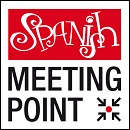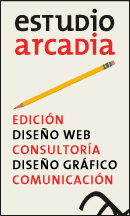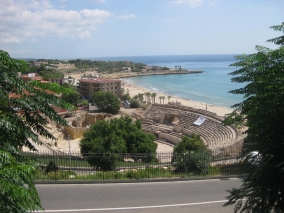Spanish schools and accommodation to study Spanish in Spain
Recent posts
Last schools
introduced
introduced
2 Accommodation

1 Spanish schools

Learning Spanish in Tarragona. The tourist guide to study your Spanish course.
General Information. 140,000 inhabitants. 550 kilometres northeast of Madrid. Tarragona belongs to the Autonomous Community of Catalonia, and is situated on the Costa Dorada (Gold Coast) on the shores of the Mediterranean. The pillars of Tarragona's economy are the largest petrochemical complex in Spain, a thriving chemical industry, a busy trading port and, last but not least, tourism. The major tourist attractions are the Archaeological Ensemble of Tarraco, the oldest Roman settlement on the Iberian Peninsula, and beaches lapped by the warm waters of the Mediterranean. Tarragona is home to two public universities - Universidad Laboral and Universidad Rovira i Virgili - which cater for a combined total of over 25,000 students. As in the rest of Catalonia, there are two official languages: Spanish and Catalan. Tarragona is a very attractive place to study Spanish with some language schools offering a wide range of courses.
Surrounding Areas. Salou (10 kilometres), a very popular seaside resort. Reus (12 kilometres), an important centre of industry and commerce. The Roman Villa of Centcelles (12 kilometres), built in the 4th century. The Roman Villa of Els Munts (14 kilometres). Cantera del Mèdol (20 kilometres), a Roman quarry from which some 50,000 cubic metres of limestone were extracted to build Tarraco, the ancient settlement which would develop into the city of Tarragona as it is known today. Cambrils (22 kilometres), a coastal town with good beaches, an interesting old quarter and a rich gastronomic tradition. The Ebro Delta (56 kilometres), an extensive nature reserve with coastal beauty spots and wildfowl nesting areas.
World Heritage Site. The Archaeological Ensemble of Tarraco was declared a World Heritage Site by UNESCO in the year 2000. In 2010, the new elements added to this organization's Representative List of the Intangible Cultural Heritage included the castells, the "human towers" built by members of amateur groups as part of the annual festivities in Catalonian towns and cities.
Main Sights. The Old Quarter, the highest part of Tarragona, surrounded by a Roman wall built in the 3rd century BC. The Amphitheatre of Tarraco, dating from the early 2nd century. The Roman Circus of Tarraco. The Roman Forum. The Central Market (Mercado Central), which opened in 1915. El Balcón del Mediterráneo, a lookout point situated at the end of a wide boulevard called Rambla Nova, with views of the Circus ruins and one of the city's beaches, Playa del Miracle. St. Mary's Cathedral (Catedral de Santa María), built in the early Gothic style. Portal de San Antonio, one of the remaining gateways in the Roman wall. Casa de la Fiesta de Tarragona, a living repository containing all the traditional items used during Tarragona's most important festivities. The Port. The Roman and Paleo-Christian Necropolis, with pagan and Christian burial sites dating from the Roman era up until the 7th century. The Chapel of the College of Jesus and Mary (Capilla del Colegio de Jesús y María), with its altar designed by Gaudí. The Medieval Hospital. Torre de los Escipiones, a Roman funeral tower. The Metropol theatre. PortAventura, one of the most important theme parks in Spain, offers a huge range of attractions. The monuments are a major attraction for the many students who decide to study Spanish in Tarragona.
Culture. The most important cultural event is the Tarragona International Dixieland Festival, which is held the week before Easter and specializes in the origins of jazz. The nearby coastal town of Cambrils hosts CambriRock (second fortnight of August), a pop, rock and hip-hop festival. Museums worth visiting include the National Archaeological Museum of Tarragona, created in the 19th century and the oldest museum in Catalonia, and the Paleo-Christian Necropolis Museum. The most representative performance venues are the Teatro Metropol, with an especially busy programme of events during the winter, and the Auditorio del Campo de Marte, which is more active in summer.
Beaches. Beaches are one of Tarragona's most important tourist attractions. There are no less than eight located within the municipal area, two of the best being the 500-metre Playa de Arrabassada and Playa Llarga, which is as long as its name suggests (3,000 metres). Outside Tarragona heading north you will find Playa de Altafulla and Playa Torredembarra, while the tourist resorts of Salou and Cambrils lie to the south.
Shopping. In the Parte Alta, the ‘High Part' of Tarragona which constitutes the old quarter, there are numerous shops of the traditional variety, whereas the Rambla Nova and adjacent streets offer a wider range of more modern outlets, including small fashion boutiques, shoe shops and jewellers'. The old quarter also boasts a number of quaint old establishments specializing in antiques. The most important shopping centres are Bulevard Bus and Parc Central. Another good shopping option is the Sunday morning flea market in the area around the cathedral, where you can find antiques and collector's items.
Gastronomy. The old quarter of Tarragona is full of typical bars with attractive décor and interesting historical features. Bars and taverns are a feature of any square in Tarragona, especially Plaza de la Font, Plaza del Rey and Plaza de la Catedral. One of the most popular dishes in this region is arroz negro, the simplest of paellas, made with chopped squid and the black squid ink that gives it its name. Other typical dishes are arrossejat, a rice and seafood blend simmered in fish stock and baked with potato and onion, and grilled or fried fish. The province of Tarragona produces good wines with designation of origin.
Sports. Tarragona's most important football team is Gimnàstic de Tarragona, commonly known as Nàstic; currently in the second division, they play their home games at the Nou Estadi, which seats 15,000 spectators. Tarragona is good for nautical sports such as windsurfing, scuba diving, ski-bus and kayaking. There are various golf courses near Tarragona, such as Club de Golf Costa Daurada and Club de Golf el Vendrell.
Fiestas. The most important festivity in Tarragona is the Fiesta de Santa Tecla (third week of September), an Event of National Tourist Interest featuring the spectacular castells, or human castles, which were declared Intangible Cultural Heritage in 2010. Another characteristic celebration is the Carnival, which represents the Roman festivals of Saturnalia, Lupercalia and Matronalia. Another fiesta of interest is Tarraco Viva (second fortnight of May), a fun-packed celebration of Roman culture with cavalry parades, gladiator fights and typical Roman food and wine. Finally, it is also worth highlighting the International Fireworks Competition (Concurso Internacional de Fuegos Artificiales), which takes place during the first week of July.
Transport. The international airport of Reus, located just 7 kilometres from Tarragona, offers numerous flights to various Spanish and European cities through a number of operators, including a variety of low-cost airlines. The city is also well connected by road and rail, so it is easy to get from Tarragona to other Spanish cities. There is also a tourist train which follows a route through the old quarter.
Nightlife. Students who decide to study Spanish in Tarragona will discover a very active nightlife. The historic centre has some pubs where you can enjoy a drink after a tapas crawl, but the marina has the highest concentration of disco bars and nightspots with live music, such as La Vaquería. Many of the city's discotheques stay open until daybreak. Salou, just 10 kilometres down the coast, has a very lively nighttime atmosphere during the summer.
Surrounding Areas. Salou (10 kilometres), a very popular seaside resort. Reus (12 kilometres), an important centre of industry and commerce. The Roman Villa of Centcelles (12 kilometres), built in the 4th century. The Roman Villa of Els Munts (14 kilometres). Cantera del Mèdol (20 kilometres), a Roman quarry from which some 50,000 cubic metres of limestone were extracted to build Tarraco, the ancient settlement which would develop into the city of Tarragona as it is known today. Cambrils (22 kilometres), a coastal town with good beaches, an interesting old quarter and a rich gastronomic tradition. The Ebro Delta (56 kilometres), an extensive nature reserve with coastal beauty spots and wildfowl nesting areas.
World Heritage Site. The Archaeological Ensemble of Tarraco was declared a World Heritage Site by UNESCO in the year 2000. In 2010, the new elements added to this organization's Representative List of the Intangible Cultural Heritage included the castells, the "human towers" built by members of amateur groups as part of the annual festivities in Catalonian towns and cities.
Main Sights. The Old Quarter, the highest part of Tarragona, surrounded by a Roman wall built in the 3rd century BC. The Amphitheatre of Tarraco, dating from the early 2nd century. The Roman Circus of Tarraco. The Roman Forum. The Central Market (Mercado Central), which opened in 1915. El Balcón del Mediterráneo, a lookout point situated at the end of a wide boulevard called Rambla Nova, with views of the Circus ruins and one of the city's beaches, Playa del Miracle. St. Mary's Cathedral (Catedral de Santa María), built in the early Gothic style. Portal de San Antonio, one of the remaining gateways in the Roman wall. Casa de la Fiesta de Tarragona, a living repository containing all the traditional items used during Tarragona's most important festivities. The Port. The Roman and Paleo-Christian Necropolis, with pagan and Christian burial sites dating from the Roman era up until the 7th century. The Chapel of the College of Jesus and Mary (Capilla del Colegio de Jesús y María), with its altar designed by Gaudí. The Medieval Hospital. Torre de los Escipiones, a Roman funeral tower. The Metropol theatre. PortAventura, one of the most important theme parks in Spain, offers a huge range of attractions. The monuments are a major attraction for the many students who decide to study Spanish in Tarragona.
Culture. The most important cultural event is the Tarragona International Dixieland Festival, which is held the week before Easter and specializes in the origins of jazz. The nearby coastal town of Cambrils hosts CambriRock (second fortnight of August), a pop, rock and hip-hop festival. Museums worth visiting include the National Archaeological Museum of Tarragona, created in the 19th century and the oldest museum in Catalonia, and the Paleo-Christian Necropolis Museum. The most representative performance venues are the Teatro Metropol, with an especially busy programme of events during the winter, and the Auditorio del Campo de Marte, which is more active in summer.
Beaches. Beaches are one of Tarragona's most important tourist attractions. There are no less than eight located within the municipal area, two of the best being the 500-metre Playa de Arrabassada and Playa Llarga, which is as long as its name suggests (3,000 metres). Outside Tarragona heading north you will find Playa de Altafulla and Playa Torredembarra, while the tourist resorts of Salou and Cambrils lie to the south.
Shopping. In the Parte Alta, the ‘High Part' of Tarragona which constitutes the old quarter, there are numerous shops of the traditional variety, whereas the Rambla Nova and adjacent streets offer a wider range of more modern outlets, including small fashion boutiques, shoe shops and jewellers'. The old quarter also boasts a number of quaint old establishments specializing in antiques. The most important shopping centres are Bulevard Bus and Parc Central. Another good shopping option is the Sunday morning flea market in the area around the cathedral, where you can find antiques and collector's items.
Gastronomy. The old quarter of Tarragona is full of typical bars with attractive décor and interesting historical features. Bars and taverns are a feature of any square in Tarragona, especially Plaza de la Font, Plaza del Rey and Plaza de la Catedral. One of the most popular dishes in this region is arroz negro, the simplest of paellas, made with chopped squid and the black squid ink that gives it its name. Other typical dishes are arrossejat, a rice and seafood blend simmered in fish stock and baked with potato and onion, and grilled or fried fish. The province of Tarragona produces good wines with designation of origin.
Sports. Tarragona's most important football team is Gimnàstic de Tarragona, commonly known as Nàstic; currently in the second division, they play their home games at the Nou Estadi, which seats 15,000 spectators. Tarragona is good for nautical sports such as windsurfing, scuba diving, ski-bus and kayaking. There are various golf courses near Tarragona, such as Club de Golf Costa Daurada and Club de Golf el Vendrell.
Fiestas. The most important festivity in Tarragona is the Fiesta de Santa Tecla (third week of September), an Event of National Tourist Interest featuring the spectacular castells, or human castles, which were declared Intangible Cultural Heritage in 2010. Another characteristic celebration is the Carnival, which represents the Roman festivals of Saturnalia, Lupercalia and Matronalia. Another fiesta of interest is Tarraco Viva (second fortnight of May), a fun-packed celebration of Roman culture with cavalry parades, gladiator fights and typical Roman food and wine. Finally, it is also worth highlighting the International Fireworks Competition (Concurso Internacional de Fuegos Artificiales), which takes place during the first week of July.
Transport. The international airport of Reus, located just 7 kilometres from Tarragona, offers numerous flights to various Spanish and European cities through a number of operators, including a variety of low-cost airlines. The city is also well connected by road and rail, so it is easy to get from Tarragona to other Spanish cities. There is also a tourist train which follows a route through the old quarter.
Nightlife. Students who decide to study Spanish in Tarragona will discover a very active nightlife. The historic centre has some pubs where you can enjoy a drink after a tapas crawl, but the marina has the highest concentration of disco bars and nightspots with live music, such as La Vaquería. Many of the city's discotheques stay open until daybreak. Salou, just 10 kilometres down the coast, has a very lively nighttime atmosphere during the summer.
© TEXT: SPANISH IN TOUR.
VIDEO: Patronato de Turismo de Tarragona
VIDEO: Patronato de Turismo de Tarragona

























